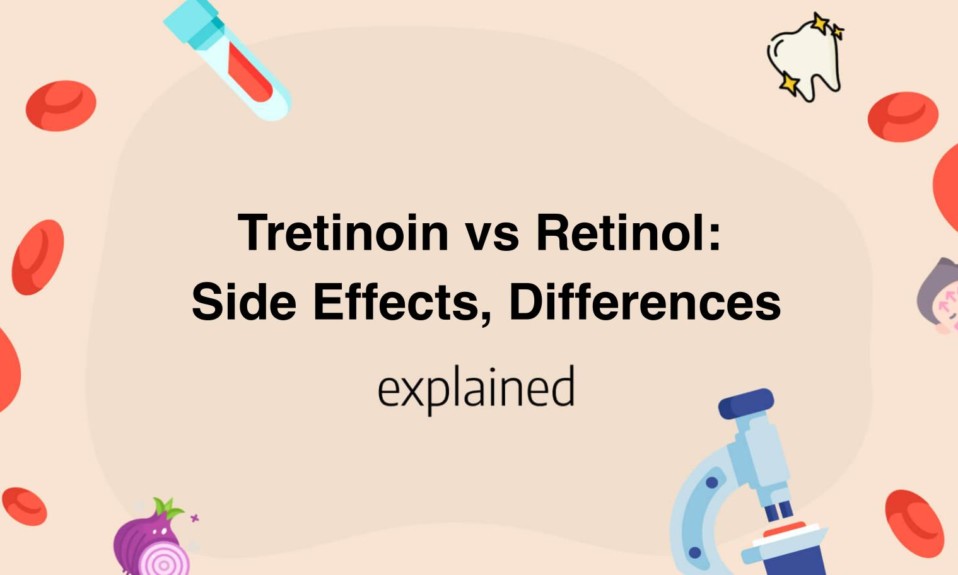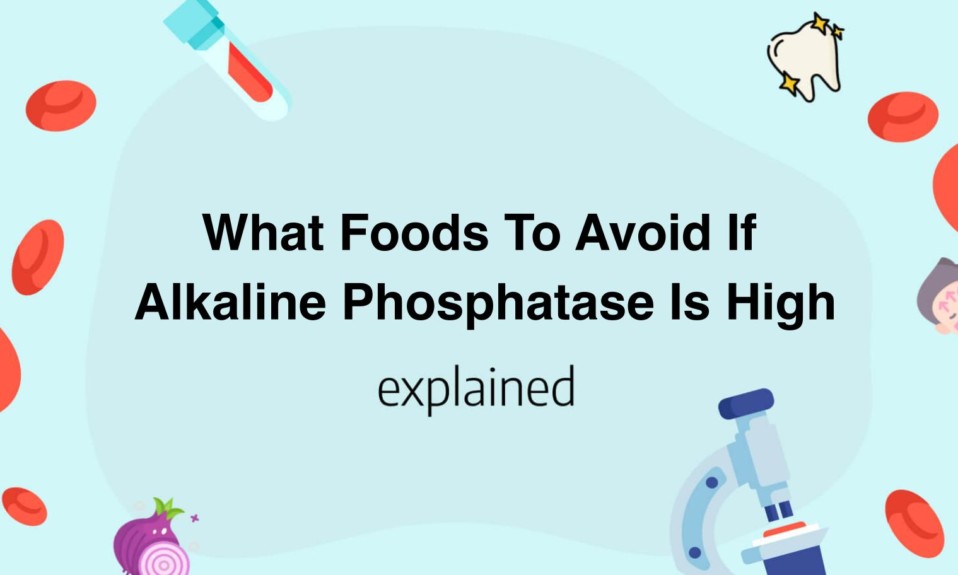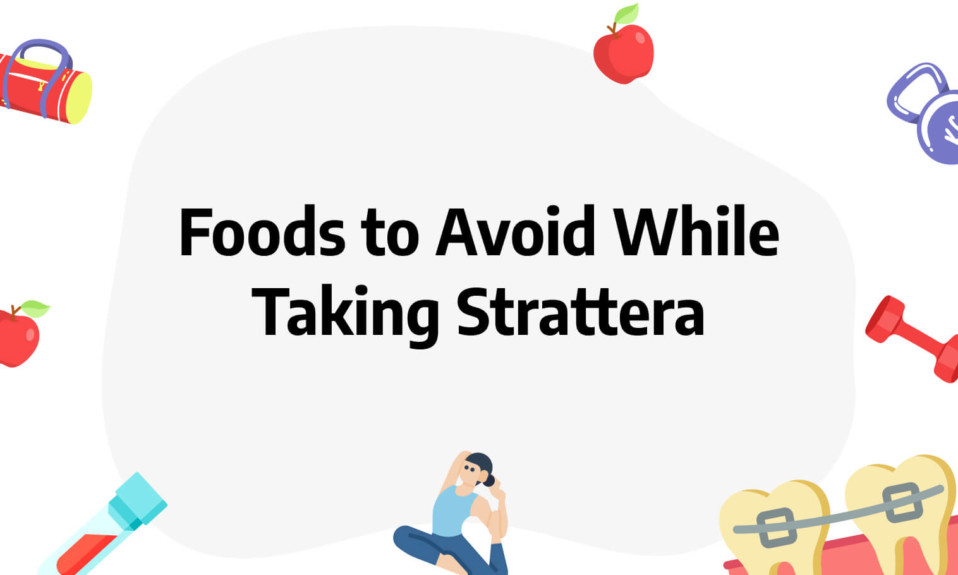If you’re in the market for anti-aging products, you’ve likely come across tretinoin and retinol.
Both are proven to reduce fine lines, improve skin texture and tone, and increase collagen production.
While they work similarly, they have some differences and side effects to consider.
In this article, we’ll compare tretinoin vs retinol to help you determine which one is right for you.
Tretinoin and Retinol: What Are They?
Tretinoin and Retinol are two active ingredients commonly used in skincare products.
Both are derived from Vitamin A and are proven to be effective in treating aging skin, acne, and other skin problems.
Tretinoin, also known as Retinoic Acid, is a medication that requires a prescription from a dermatologist.
It is a potent form of Vitamin A that helps to reduce fine lines, wrinkles, dark spots, and uneven skin tone.
Tretinoin works by increasing the rate of cell turnover, which helps to unclog pores, stimulate collagen production, and improve skin texture.
It is available in various formulations such as creams, gels, and liquids.
However, Tretinoin can cause skin irritation, redness, and peeling, especially during the first few weeks of use.
Therefore, it is essential to start with a lower concentration and gradually increase the strength.
Retinol is an over-the-counter version of Vitamin A.
It is a milder form of Tretinoin and lacks the same potency.
Retinol is converted into retinoic acid in the skin, but the process is slower, making it suitable for individuals with sensitive skin.
Retinol has similar benefits to Tretinoin, such as reducing fine lines, improving skin texture, and increasing collagen production.
However, it may take longer to see results compared to Tretinoin.
Retinol is often found in anti-aging creams, moisturizers, and serums and is safe for long-term use.
In conclusion, both Tretinoin and Retinol are effective anti-aging ingredients that can improve the appearance of skin.
While Tretinoin is a prescription medication that requires careful monitoring and can cause skin irritation, Retinol is a safer and milder over-the-counter option.
It is essential to start with a low concentration of both ingredients and gradually increase it to avoid any adverse reactions.
When used correctly, both Tretinoin and Retinol can rejuvenate the skin, reduce the signs of aging and improve overall skin health.
The Benefits of Tretinoin for Skin Health
Tretinoin is a potent anti-aging agent that has been shown to be effective in treating acne, pigmentation, and photoaging.
It is a derivative of vitamin A that works by increasing cell turnover and stimulating collagen production.
The benefits of tretinoin for skin health are numerous, and it has been extensively studied and used by dermatologists and skincare professionals for decades.
Acne Treatment: One of the most notable benefits of tretinoin is its effectiveness in treating acne.
It works by unclogging pores and preventing new pimples from forming, as well as reducing inflammation in the skin.
Tretinoin is often prescribed by dermatologists as a first-line treatment for mild to moderate acne, and it can also be effective in treating more severe forms of acne when used in combination with other medications.
Anti-Aging: Tretinoin is also highly effective in reducing the appearance of fine lines, wrinkles, and other signs of aging.
It helps to increase the production of collagen, which is essential for maintaining healthy, youthful-looking skin.
Regular use of tretinoin can help to improve skin texture, tone, and overall quality.
Pigmentation: Another benefit of tretinoin is its ability to reduce the appearance of pigmentation and dark spots on the skin.
It works by inhibiting the production of melanin, which is responsible for darkening the skin.
This makes tretinoin an effective treatment for age spots, sun spots, and other types of hyperpigmentation.
In summary, tretinoin has numerous benefits when it comes to skin health.
It is a powerful anti-aging agent, an effective acne treatment, and a great solution for reducing pigmentation and dark spots.
If you’re considering using tretinoin, it’s important to speak with your dermatologist and follow their recommendations for use.
When used correctly, tretinoin can be a game-changer when it comes to achieving healthy, beautiful skin that looks youthful and radiant.
The Advantages of Retinol: A Skin-Care Must
Retinol has been around for a long time, but its benefits for the skin are only just being acknowledged now.
One of its benefits is its ability to boost cell regeneration, which helps make the skin smoother and more even.
In addition, retinol can help reduce fine lines and wrinkles, making it a must-have product in any anti-aging regimen.
Another benefit of retinol is that it helps to reduce hyperpigmentation and dark spots, which can often be caused by acne or UV damage.
This makes retinol an excellent choice for anyone looking to improve the clarity and brightness of their skin.
One of the main advantages of using retinol is that it is a highly effective product that produces results quickly.
When used regularly, retinol can help to improve the overall condition of the skin, leaving it looking healthier, younger, and more radiant.
However, it is important to note that retinol can be irritating to some people’s skin, so it is important to start slowly and build up to a higher concentration over time.
In addition to its benefits for the skin, retinol is also an excellent choice for anyone looking to improve their skin health.
It is rich in antioxidants, which help to protect the skin from environmental damage caused by free radicals and other harmful pollutants in the air.
This protection helps to keep the skin looking and feeling healthy, and can even help to prevent premature aging.
Overall, retinol is a must-have product for anyone looking to improve the look and feel of their skin.
Its ability to boost cell regeneration, reduce fine lines and wrinkles, and improve skin clarity and brightness make it an indispensable part of any skin-care routine.
So, if you are looking for a product that is highly effective, easy to use, and provides quick results, look no further than retinol.
Tretinoin vs Retinol: Which Is Better for Dark Circles?
If you’re looking for a solution to dark circles under your eyes, you might be confused by the different options available.
Tretinoin and Retinol both claim to be effective, but which one should you choose? Tretinoin, a prescription-strength retinoid, is a more potent form of Vitamin A and is commonly used to treat acne.
On the other hand, Retinol is weaker and available over the counter.
While both can help with dark circles, Tretinoin is usually the preferred option when it comes to treating this condition.
Tretinoin works by speeding up skin cell turnover, helping to reduce the appearance of dark circles and improving skin texture.
It also helps to stimulate collagen production, which can help improve the elasticity of the skin around the eyes.
However, it should be used sparingly as it can cause skin irritation and sensitivity.
Retinol, on the other hand, works by gently exfoliating the skin to promote cell turnover.
However, it is not as strong as Tretinoin, and may not be effective for some people.
While Retinol does not require a prescription, it may take longer to see results compared to Tretinoin.
If you’re considering Tretinoin, it is important to speak with a dermatologist to ensure it is the right treatment for you.
While it may be effective, it can also cause dryness, flakiness, and redness.
For those with sensitive skin, Retinol may be a better option.
However, it is important to remember that both treatments take time to work and may involve an adjustment period before seeing results.
In summary, both Tretinoin and Retinol can be effective in treating dark circles under the eyes.
However, Tretinoin is generally considered the stronger option and may provide more effective results for those with severe dark circles.
It is important to speak with a dermatologist and to follow a regular skincare routine to achieve the best results.
You’ll also like: Can dogs eat tamarind
How to Use Retinol and Tretinoin Together for Best Results
Using retinol and tretinoin together is a popular skincare combination that many people swear by for anti-aging benefits.
However, it’s important to use them correctly to avoid irritation and maximize their effectiveness.
Firstly, it’s important to note that retinol is a more gentle form of vitamin A, while tretinoin (also known as Retin-A) is a prescription-strength version that is stronger and can cause more irritation.
If you’re new to these ingredients, it’s best to start with retinol and gradually work your way up to tretinoin.
To start, cleanse your face and wait for it to completely dry.
Then, apply a pea-sized amount of retinol to your entire face and neck.
It’s important to use a moisturizer on top of the retinol to help reduce any potential dryness or irritation.
After a few weeks of consistent use, if your skin is tolerating the retinol well, you can start introducing tretinoin into your routine.
When using both retinol and tretinoin together, it’s important to alternate nights between them.
For example, you can use retinol one night and tretinoin the next, and so on.
This will help reduce any potential irritation and allow your skin to adjust to the stronger tretinoin over time.
Another tip is to buffer the tretinoin with moisturizer.
This means applying a moisturizer to your face before adding the tretinoin to help dilute it and reduce its strength.
You can also apply a moisturizer on top of the tretinoin to help reduce any irritation.
It’s important to note that both retinol and tretinoin increase sun sensitivity, so it’s crucial to wear a broad-spectrum sunscreen with at least SPF 30 during the day to protect your skin.
In summary, using retinol and tretinoin together can be an effective way to improve the appearance of fine lines, wrinkles, and uneven skin texture.
Start with retinol and gradually work your way up to tretinoin, alternating nights between the two and buffering the tretinoin with moisturizer.
And don’t forget to wear sunscreen during the day!
You’ll also like:









